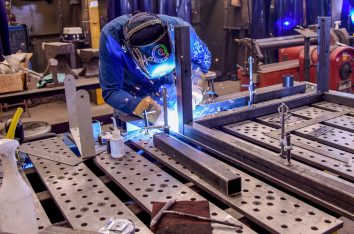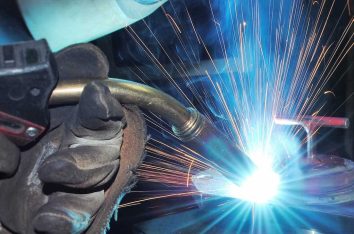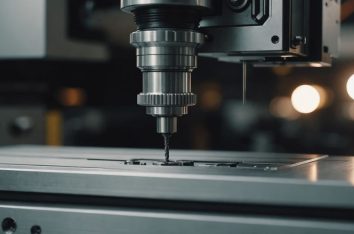Stainless steel is a favorite in many industries because of its strength and resistance to rust. But working with it can be tough. From welding to machining, each step has its own set of problems. This article will help you understand these challenges and offer some tips to overcome them.
Key Takeaways
- Sensitization can weaken stainless steel, but it can be prevented with proper heat control.
- Managing heat-affected zones is crucial to maintaining the material's strength.
- Using the right tools and techniques can reduce work hardening issues.
- Proper coatings and material choices can help fight corrosion.
- Skilled labor and the right welding techniques are vital for successful stainless steel fabrication.
Understanding Sensitization in Stainless Steel
Sensitization in stainless steel is a process where the material's chemical composition changes due to heat. This often happens during cutting or welding. Sensitization can lead to corrosion, which is a major concern in stainless steel fabrication. To avoid this, it's important to follow good manufacturing practices.
Causes of Sensitization
Sensitization occurs when stainless steel is exposed to high temperatures. This exposure causes a zone poor in chromium to form. Chromium is the main element responsible for the corrosion resistance of stainless steels. Without enough chromium, the steel becomes more prone to corrosion.
Effects on Material Properties
When sensitization happens, the material loses its corrosion resistance. This can lead to rust and other forms of deterioration. The structural integrity of the stainless steel can also be compromised, making it less reliable for use in various applications.
Preventive Measures
To prevent sensitization, it's crucial to control the heat applied during fabrication. Here are some steps to follow:
- Use lower heat settings during welding and cutting.
- Implement rapid cooling techniques to minimize the time the steel spends at high temperatures.
- Follow best practices for stainless steel fabrication to maintain its desired properties.
Managing Heat-Affected Zones
When working with stainless steel, managing the heat-affected zone (HAZ) is crucial. The HAZ is the area of the metal that has had its properties altered due to the heat from processes like welding or cutting. Proper management of this zone is essential to maintain the integrity of the material.
Addressing Work Hardening Issues
Work hardening, also known as cold working, is a process that strengthens stainless steel by altering its internal structure. This can make the material more difficult to work with, but there are ways to manage it effectively.
Dealing with Corrosion Resistance
A majority of metals will corrode when exposed to the elements. However, stainless steel is designed to resist corrosion, making it ideal for outdoor applications. Even though stainless steel is resistant to corrosion, it can still be susceptible to weld decay, where the weld itself starts to corrode.
Challenges in Welding Stainless Steel
Welding stainless steel presents unique challenges that require specialized knowledge and techniques. Understanding these challenges is crucial for achieving successful welds and maintaining the material's integrity.
Common Welding Issues
Stainless steel welding is not a common practice for many welders, primarily due to its high electrical resistance and lower thermal conductivity compared to other metals. These properties can lead to issues such as warping, cracking, and oxidation during the welding process.
Techniques for Successful Welding
To overcome these challenges, welders must use specific techniques and tools. Key strategies include:
- Using the proper electrode
- Taking time to ensure precision
- Applying a cooling agent to manage heat
Additionally, cleaning the weld area before starting and covering it with a protective coating after finishing can significantly improve the weld quality.
Importance of Skilled Labor
Given the complexities involved, skilled labor is essential for stainless steel welding. Technicians must be well-versed in the material's properties and the best practices for welding it. This expertise helps in minimizing errors and ensuring a durable, high-quality weld.
Overcoming Machining Difficulties
Machining stainless steel presents unique challenges that require careful planning and execution. Proper tool selection and machining parameters are crucial to achieving the desired results while minimizing wear and tear on equipment.
Surface Finish and Aesthetic Considerations
Achieving the desired surface finish in stainless steel fabrication is crucial for both functional and aesthetic reasons. A smooth surface finish and precise dimensional accuracy are paramount in many applications, especially in industries like commercial appliances where appearance matters. The inherent hardness and toughness of stainless steel can make this task challenging, requiring meticulous attention to detail.
Achieving Desired Surface Finish
To achieve a quality finish, fine-tuning machining parameters such as cutting speed, tool geometry, and tool path strategies is essential. Post-processing methods like polishing or deburring can remove surface imperfections and ensure uniformity. Advanced CNC programming techniques can also enhance surface quality.
Polishing Techniques
Polishing stainless steel involves several steps, including grinding, buffing, and sometimes electro-polishing. Each step must be carefully controlled to avoid introducing new imperfections. Regular maintenance is also necessary to maintain the aesthetic and hygienic qualities of the surface.
Maintaining Aesthetic Quality
Maintaining the aesthetic quality of stainless steel surfaces requires regular cleaning and maintenance. This is especially important in environments where the material is exposed to harsh conditions. Scheduling maintenance one to four times a year for standard applications can help preserve the material's appearance and functionality.
Handling Distortion During Fabrication
Distortion is a common challenge in additive manufacturing, as the high temperatures and rapid cooling processes can lead to warping and residual stresses in the final product. This section explores the various strategies and techniques used to mitigate distortion, such as optimizing build orientation, employing support structures, and utilizing post-processing methods like stress relieving and hot isostatic pressing (HIP).
Causes of Distortion
When welding, metal heats up, causing it to expand and then contract as it cools. This expansion and contraction can lead to distortion. The affected areas might warp to a point where they can't be used in the final product. Temperature changes that aren't uniform throughout the metal can cause stress. Often, this distortion happens because the metal is clamped during welding, allowing it to expand and contract only in the direction of least resistance.
Minimizing Distortion
Eliminating distortion entirely is tough because you can't fight the physics of expansion and contraction. However, you can use welding techniques to control it as much as possible. Here are some methods:
- Bevel the edges of the metal before welding to get good fusion with less distortion.
- Use tack welds spaced about twelve inches apart to help control distortion.
- Experienced welders can weld quickly and still achieve good fusion, which helps reduce distortion.
- Intermittent welding, backstep welding, and pre-heating are also effective ways to reduce distortion from extreme heat.
- Using a jig instead of a clamp can make a big difference.
Corrective Measures
If distortion occurs, there are ways to correct it. One method is to apply heat to the opposite side of the distortion to counteract the warping. Another approach is to mechanically straighten the metal using presses or other tools. In some cases, a combination of both methods may be necessary to achieve the desired result.
Ensuring Quality Control
Quality control in stainless steel fabrication is crucial to ensure that the final products meet both customer and regulatory standards. Effective quality control measures include weld inspections, welder qualifications, and non-destructive testing (NDT) to ensure that the welds do not present any defects.
Inspection Methods
Inspection methods are essential for maintaining high standards in stainless steel fabrication. These methods include visual inspections, ultrasonic testing, and radiographic testing. Each method has its own advantages and is chosen based on the specific requirements of the project.
Testing Procedures
Testing procedures are vital to verify the integrity and quality of the fabricated stainless steel. Common testing procedures include tensile testing, hardness testing, and corrosion resistance testing. These tests help in identifying any potential weaknesses in the material.
Compliance with Standards
Adhering to industry standards is a key aspect of quality control. Standards such as ISO 9001 certification help organizations ensure their products consistently meet customer and regulatory requirements. Regular audits and feedback loops are also important to maintain compliance and improve processes.
Cost Management in Stainless Steel Fabrication
Managing costs in stainless steel fabrication is crucial for both residential and commercial projects. Discover insider strategies to significantly lower expenses and improve efficiency.
Material Costs
Material costs can be a significant part of the budget. To manage these costs effectively, consider bulk purchasing and negotiating with suppliers. Additionally, using alternative materials where possible can also help in reducing expenses.
Labor Costs
Labor costs can quickly add up, especially if the fabrication process is time-consuming. Streamlining workflows and investing in skilled labor can lead to better productivity and lower costs in the long run.
Efficiency Improvements
Improving efficiency is key to cost management. Implementing modern technologies and optimizing production processes can result in significant savings. Regular maintenance of equipment also ensures that operations run smoothly, minimizing downtime and repair costs.
Environmental and Safety Concerns
While additive manufacturing offers numerous benefits, it is crucial to address the environmental and safety concerns associated with the technology. This section delves into the potential hazards, such as the emission of particulate matter and volatile organic compounds (VOCs), and the importance of implementing proper safety protocols and environmental regulations to ensure a sustainable and responsible adoption of AM practices.
Handling Hazardous Materials
In stainless steel fabrication, exposure to chromium and nickel poses significant occupational hazards. These metals are essential in stainless steel but can be harmful if not handled properly. Workers should use personal protective equipment (PPE) and follow safety protocols to minimize risks.
Waste Management
Metal fabrication can lead to air and water pollution due to the release of metal particles and chemicals. Companies are adopting sustainable practices to mitigate these effects, such as using recycled materials and cleaner production technologies. Filtration systems can also capture and recycle waste, reducing environmental impact.
Worker Safety Protocols
Ensuring worker safety is crucial in stainless steel fabrication. Proper training, use of PPE, and adherence to safety guidelines are essential. Regular safety audits and real-time monitoring of equipment can help maintain a safe working environment.
Conclusion
Stainless steel fabrication comes with its own set of challenges, but with the right knowledge and techniques, these can be effectively managed. From understanding the effects of heat on the material to employing skilled professionals, each step is crucial in ensuring the integrity and quality of the final product. By addressing these common issues head-on, manufacturers can continue to leverage the benefits of stainless steel while minimizing potential drawbacks. In the end, overcoming these challenges not only improves the fabrication process but also enhances the durability and performance of stainless steel products.
Recent Posts
- CNC Machining in the Automation Industry: Precision Engineering for the Future
- CNC Machining in the Food Production Industry: Precision for Palates
- Welding and Fabrication in the Food Production Industry: Crafting Quality for Culinary Excellence
- What is Welding? An Introduction to Metal Joining Techniques
- How CNC Machining Works: The Technology Behind Precision Manufacturing




